2007
Grand Island, New York
Previous Feature Stories
|
Auld Lang Syne - New Year 2008  Click "Auld Lang Syne" for music and lyrics. Niagara River Boats The Best Niagara River Boating Days Are Gone, But the Stories Remain - 1951 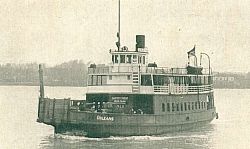
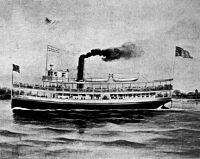 The Orleans The Ossian Bedell Click photos for larger view 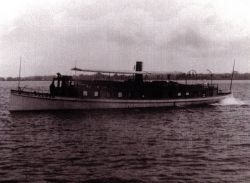 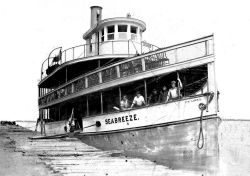 (left) The Falcon, Yacht of Falconwood Company; (right) Seabreeze Click photos for larger view 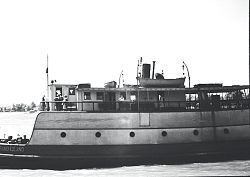 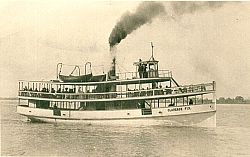 "Grand Island" - car carrier built in 1901 The Clarence Fix Click photos for larger view 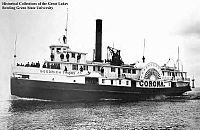 The Corona Click photo for larger view This article, minus the photos, was published Wednesday, August 8, 1951 in the Buffalo Evening News Posted at Isledegrande.com on November 29, 2007 - Author Unknown The golden era of the river boats has passed. Gone are the days when it was the gay, noisy, favorite pastime of many Buffalonians to "excursion" around Grand Island and stop at one of the numerous clubs and resorts. Gone also is the automobile ferry Orleans which chugged its way between Bird Island and Ft. Erie. It ended service in the Fall of 1950 after 75 years. All virtually have passed away since the closing of Erie Beach in 1931 and the opening of the Grand Island bridges in 1935. Crystal Beach, although not on the river, remains an attraction for the Niagara Frontier as it has been for more than 50 years. Among the many steamers going to Crystal Beach shortly after it opened in 1890 were the Pearl, Gazelle, State of New York, White Star and the Puritan, captained by William Flaherty. In 1896 a new, steel side-wheeler, the Garden City, was put into service. Ft. Erie and Early Spot Within the memory of most Buffalonians is the Americana, a sister ship of the Canadiana before it was sold in 1929 to a New York City firm to enter passenger service between New York and Rye Beach. The Canadiana, put into service in 1910, remains the sole survivor. Moving north to Erie Beach, there was the United States, the Chicora, and the old Ossian Bedell, which crossed to Erie Beach from 1915 to 1930. In 1932, the Ossian Bedell, which was 116 feet long and carried 700 passengers, and the Chicora, a holdover from the Sour Springs Grove days, were sold for use in New York Bay. Ft. Erie was one of the earliest ferrying spots in Western New York history. As far back as 1819 Lovin Hodge ran a ferry. He was followed by James Haggert, who operated the Black Rock ferry from 1821 to 1861. Mr. Haggert's early ferry was propelled by two horses working on a tread-wheel system geared to paddle wheels. The trip took about ten minutes. Among Mr. Haggert's boats were the Waterloo, the Cygnet, the Alliance and the Union. Ferry Hit Ice Cakes Among the early river ferries were the International in the 1870s, the Newton, and the Grace Dormer which last ran to Ft. Erie in November 1868. Early in this century, the Hope, Union, Niagara and Grand Island also crossed at Ft. Erie, and until recently the Toledo, which was brought to Buffalo for use during the 1932 centennial, also operated. One Spring of the late 90s, the ferry Niagara was crossing from the foot of Ferry St. to Ft. Erie. The river was choked with floating ice and the Niagara struck an unusually large cake. The effect was to raise the propeller out of water and make it almost useless. The Niagara, out of control, was swept down the river by the swift current. Unable to steer towards the International Bridge swing span which had been opened, the ferry collided with the bridge head on, its pilot house and smoke stack being sheared off. Prayers Given In Thanks Without capsizing, the steamer drifted down the river. Near Grand Island it was taken in tow by the tug International, which had hastened from its berth near the foot of Ferry St. Passengers aboard are reported to have been led in prayer by a clergyman in thankfulness for their escape. The International, a river institution in the 90s, was painted black and orange. It carried crossed American and Canadian flags painted on the bow and was maintained by both governments to aid navigation on the river - in those days crowded by heavy traffic of passenger boats to Grand Island and tows of three and often four lumber carriers bound for the Tonawandas. The lumber ships would come from the upper lakes with boards piled high on the decks. A steamer would be towing from two to three loaded barges. The International would wait until the group had passed the foot of Ferry St., then churn out and take a line from the rear-most tow. Ivanhoe a Rail Ferry In this way the tug would keep the ships in line going through the narrow passage of the International Bridge swing span. Since the barges had no power except sails, which always were kept furled going down the river, their steerage-way going through the bridge in the swift current would have been uncertain without the help of the tug. One of the early railroad ferries operating before the International Bridge was the Ivanhoe. It began regular trips for the Erie and Niagara Railroads in 1869. But by far the greatest number of excursion boats and great rivermen operated around Grand Island. At least five great names can be recalled. They are Fix, Moon, Sloan, Pettit and Day. Probably best known is the name of Frank F. Fix who, with his brother Charles, who died in March 1934, operated the Ft. Erie ferries and excursion boats. Frank Fix, on the day he died in August 1945, was reminiscing about the good old days of the trips around Grand Island in the Edgewater and the Seabreeze. Silver King a Fine Boat "George Moon, my brother Charles and I used to have steamers leaving Amherst Street. Sam Sloan had boats leaving from Georgia Street and Joe Day from Porter Avenue," Mr. Fix said. about 30 years before his death, Mr. Fix purchased the old Bedell House and used a stop there on his excursions. As late as 1945 he had made 29 trips around the Island that year, but did so only because he owned the boats and docks. He stated that it was just a "sideline" with him. Among the finer boats the Fix brothers operated were the Silver King, their first boat; the Clarence Fix, and the tug Henry Koerber, which, with the barge Lottie Koerber, was involved in the Eagle Park disaster. It was about 8 o'clock the evening of June 23, 1912, when the tug was edging in toward the dock to pick up about 250 passengers. Newspaper accounts state that the park attendants were making frantic efforts to get the crowd off the overloaded dock, when about 50 feet of planking on the south end gave way, throwing more than 100 persons into water ten feet deep. In the panic 34 were killed. Many Had Own Boats Among the many boats operated by Capt. Joseph P. Day were the Hattie Brown, Eliza Fox, Sarah Day, Blanche Shelby, Mary Anne, Mary Day, Der Fratz, George Stauber No. 1 and George Stauber No. 2. Others which old-timers will remember were the Sprudel, named after the famous club in Buffalo, the George Dittley, and the Phillip Schaefer, named after a brewery operating early in the century. His son, Joe Day Jr., was chief engineer of the steam yacht Black Shelby and the W. W. Oliver. Back in those days many families in Buffalo had their own boats. The Rumsey family owned the Orizaba, a fine lake boat, and the Jewett family had built the Titanic, the fastest at that time. It made 22 knots, according to John Day, son of the man who used to run the ship. Capt. Curtis an Old-Timer Capt. Richard Pettit piloted the Glance, which established a round-the-island record of 3 hours, 39 1/2 minutes in 1887. Capt. Pettit, who died in November 1941, commanded the Ossian Bedell during his 40-year career on the river. He also commanded the Silver Spray and was pilot of the yacht Allenton, on which Grover Cleveland was a frequent passenger. Boats belonging to George Moon were the Dorothy, Ruth and Moon. Another old-time riverman was Capt. Henry Curtis, who operated the Nat Wagner about 1890. Many other boats operated around the island. Among them were the Sunbeam, Titania, William D. Kroop, Harrison, Periwinkle, Island Belle, Eldorado, Argosy, Riverside, Corsair, L-8, Nellie, Alex Sloan, Alert, and the Idle Hour. During Pan-American year - 1901 - the handsome gold-and-white painted America was operated as a river cruise ship. Back in the Golden Era of the island each of the more famous clubs had its own yacht. Falcon Built in 1860 Probably the most famous was the Falconwood Club, built by Lewis F. Allen, an uncle of Grover Cleveland near the head of the island on the West River in the 1850s. The opening was June 1859, with the steamer George O. Vail at the guests' disposal. The grounds were then opened to the public and during the first year the Cygnet and Arrow carried the passengers to the resort. In 1860, the little steamer Falcon was built. By August of that year, in company with the Clifton, it was making trips to Falconwood. In 1862 the Niagara and in 1863 the River Queen and Fanny White were added to those that stopped at the Falconwood dock. In the 1860s the Falconwood was turned into a private club and the little Falcon became the club's private yacht. The boat had a glass-enclosed cabin on the main deck and an awning shaded promenade deck above. In later years the club became the summer home of the late George E. Matthews.. Moored on Boundary Line Another club which boasted a private yacht was the Oakfield Club on the West shore. It was a three-story frame house with spacious verandas on each floor. The popular club had beautiful grounds on the river front and docks where the Lorelei, built by David Bell, used to land the guests. North of the Oakfield Club was the McComb house, later the Island Club, well known during the late 19th century. Many took trips on their steamer, the trim black and white Huntress. During prohibition, the Huntress was moored for a time near Beaver Island with the International Boundary line passing through it, thus making it possible to give your drink a little more zip. Grover Cleveland and a group of men who thought of Grand Island as a sporting paradise in 1852 formed the Beaver Island Club. The clubhouse later became the summer home of Charles Marshall. Among the many beaches and parks popular in the old days were Monahinga Park with the mineral springs; Sour Springs Grove, sometimes known as Eldorado, to which traveled the steamer R. G. Stewart, Jennie Griffin, A. J. Wright, and Norman L.Wagner and the barge C. W. Wolfe; Edgewater Park which was run by William Voetch, who died in May 1936; Windsor Beach, Eagle Park, St. Andrew's Park, Electric Beach, Elmwood Beach, Idlewild, Paradise Grove and Sheenwater, which in 1892 was one of the first electrically-lighted amusement parks in America. Another popular spot was Niagara View, which during the 1880s was served by the steamers Rundel and Alaska. Few Women on River First action toward ferry service for Grand Island came in 1825 when the State Legislature granted two franchises for ferries to operate across the East River. James Sweeney was granted the right to operate from the Niagara County side of Tonawanda Creek and William Williams from the Erie County side. Mary Ann Nice, a pioneer settler recalled that , in order to reach the mainland, her husband had his own ferry powered by a horse on a treadmill. Capt. Joseph P. Day recalled in a biography of him, written in 1899 that one of the few women on the river was Kate Schaefer. In 1857, when she was 16, she was wheelsman and engineer of the tug Relief, which plied between Grand Island and Buffalo. Her father, Jacob Schaefer, an Island resident, acted as fireman and the girl handled the wheel and throttle. Grand Island had passenger ferry service since the first regular trips were begun in June 1874. The early ferries landed at a dock on the corner of the Allenton farm. Gone Are the Days The later ferries, that operated to July 1935, when the bridges were opened, ran from River Road to the Bedell House and from Tonawanda to a dock near Monahinga Park. Ferry service to the Bedell House was resumed for a while in 1943. The 90-foot steel tug Clarence Fix and the 110-foot tug Manomet were sold by the Fixes to a Philadelphia concern, which in 1941 still owned about 20 boats. Gone are the days of the pleasure trips, the beaches, the parks, hotels and clubs. Some of the boats lie in the graveyard around the Island, as at the Bedell House, where lie the Henry Koerber, the 20th Century, the Stanley, Franklin and Silver Spray. A few of these were salvaged for scrap during World War II. Still visible is part of the Corona, which lies under the dock at Edgewater. Paul Facklam Thoughts of an Island Marine On Vietnam War 40 years ago Published in the Wednesday, November 1, 1967 edition of the Island Dispatch Posted At Isledegrande.com on November 8, 2007 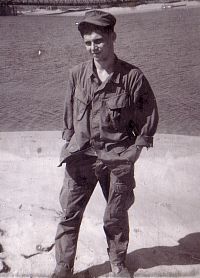
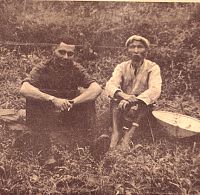  Pfc. Paul Facklam (click for larger view) and 1996 photo “We can’t win the war in Vietnam unless we have 100 per cent participation from the South Vietnamese Army and especially the folks back home.” This statement sums up the thoughts of a young Grand Island Marine home on leave. This week he made some “first hand observations” about that war in Southeast Asia. Paul Facklam is a member of Golf Company, 1st Division, 2nd Battalion of the 7th Marines stationed north of Da Nang, South Vietnam. Paul returned home three weeks ago to attend the funeral services for his father-in-law, George E. Darby of 3344 Wallace Drive. The Marine thought for a moment and then spoke in an easy, confident way: “I guess I’ve seen quite a few Vietnamese soldiers and civilians. The people are backward in a lot of ways. Yet many of them have a lot of spirit and they really want to live in a free and non-corrupt country.” Paul observed that many South Vietnam soldiers “are not putting 100 per cent” into the war effort, possibly because of the large U. S. commitment they know they have behind them. “Many of them don’t want to fight a full time war,” he said. The morale of the Americans in Vietnam could be better, Paul said, noting that demonstrations in the states, lack of spirit by some of the Vietnamese soldiers and the countless “civilian saboteurs” tend to discourage the American servicemen. Stationed north of Da Nang in Phai Pai, Paul is assigned to a unit primarily concerned with patrol duty. He and other Marines in his unit maintain patrols throughout the surrounding area in “seek and destroy” missions. “Another morale killer is the booby-trap situation. There are scores of them,” he said. “The trap most widely set by the Viet Cong is the “grenade-type.” “We have to be constantly watching above, below, behind and around us, because you never know when or where the Viet Cong or a booby trap is positioned. Patrols are particularly in danger.” The grenade-type trap can be placed or positioned on a tree, in the ground, on the fence or gate of a Vietnamese village and “just about anywhere the Viet Cong thinks an American patrol might go.” “A grenade-type trap is easy to rig,” he said. Paul explained that the Viet Cong take a grenade, pull the firing pin, tie a wire around the spoon on the grenade and then fasten it to a tree or along a trail. The men in his patrol have to stay scattered so that if one of them trips a wire, the others won’t “be blown up along with him.” Paul recalls going out on patrols and seeing farmers and their wives and children tilling the soil. “Sometimes, if one of my fellow Marines gets killed or maimed by one of the traps, I can’t help but think that it’s quite possible that any one of the people I see along the way set the trap themselves.” Paul doesn’t think the South Vietnamese want to see communism growing in their country. “Most Vietnamese are glad we’re there, but it makes you wonder when you’ve been on patrol and two or three of your buddies are killed by a grenade trap. “What have they got to lose if they sympathize with the Viet Cong?” He explained that their country has been a battleground for years. “If some Vietnamese people don’t understand what democracy is and how it can work to help them help themselves both socially and economically, then it doesn’t make any difference to them who wins or loses.” Paul said, however, he feels the majority of the citizens of Vietnam understand and favor a democratic system of government. He has been in several firefights. “These cause the most trouble at night because the Viet Cong infiltrate.” Paul had an experience one evening, while standing the company watch. He heard shots in the distance and assumed a terrific firefight was going on. He sounded the alert, and although his unit wasn’t affected, he found out later it was two South Vietnamese Army units that had encountered each other in the dark in a search and destroy mission, and mistakenly opened fire on each other. This mistaken “firing on each other” unfortunately holds true on the home front in the U. S. “It’s silly to burn draft cards,” said the marine. “Sure these sort of demonstrations have a bad effect on some of the troops.” “Over in Vietnam it’s a real war. You go through training and fighting with the same men. You get to know them. All of a sudden your buddy steps on a grenade or Punji Trap or gets shot by a Viet Cong sniper and your best friend could be dead. And then we read about Americans back in the states who hold mass rallies and burn their draft cards,” he continued. “Sure it makes a guy wonder what he’s there for sometimes.” The marine had a lot of praise for the speed and efficiency of the U. S. “Medivac” system. These are medical outfits that utilize helicopters to evacuate wounded servicemen to a hospital. Two “choppers” are sent at the same time when a call goes out. One stays up and provides security with its machine guns while the other lands to evacuate the wounded. The men on the ground have to throw up a smoke screen of a certain color so the Medivac units know where to land. The helicopter can hold 5-6 stretcher cases. We talked about the controversial M-16 rifle. “A lot of us don’t even like to call it a rifle,” he said. There has been a lot of controversy in the past few months concerning U. S. servicemen found dead or wounded with “jammed” weapons. Paul said he understood a “lot of improvements have been made” on the rifle but parts of the weapon rust and some are defective and “next to impossible to correct.” Two types of ammunition are used and one is good but the other misfires or doesn’t fire half of the time. He cited a “general discontent” among his friends who have to use the rifle. “We won’t use it often if we can help it. In a firefight you have to rely on your weapon and if the weapon malfunctions, chances are nobody will be on the spot in the split second that it takes to get killed or wounded.” The answer, he said was probably to “straighten out this weapon or give us back the good old reliable M-14.” Philosophically, Paul knows why he is in Vietnam. “If Vietnam goes to the Communists, then the rest of the surrounding countries will eventually fall. I don’t know what the outcome will be, but the U.S. has the right idea and a lot of men are dying to uphold our commitments.” When Paul first arrived in Vietnam, he and the other new troops received a briefing. He was told to be friendly with the people when on patrol and when he met civilians in the fields or the towns. He learned later, however, through several personal and tragic experiences, not to be too friendly, because “you never know whether you’re talking to an honest hard-working South Vietnamese civilian or a Viet Cong sympathizer.” One thing Paul finds unique in Vietnam is the “County Fairs.” Occasionally, a unit will go into town and pass out candy to the children, food to the parents, help rebuild bombed or destroyed homes and teach them games like baseball. He said he felt these “fairs” help to build good relationships. “The children in Vietnam,” Paul said, “are really a pathetic sight. It’s common to see them from two years old, running around with no clothes or only GI handouts, and half starving.” “But the Viet Cong capitalize on this and sometimes pay or force families to sabotage. “But the Vietnamese are a very proud people, and we have to be careful about giving things to the children.” Paul’s brother, Arnold, is a captain in the Marine Corps stationed in Cuba. He spent a tour of duty in Vietnam as a tank commander on the DMZ line near Dong Ha. Paul’s wife, Linda, lives at home with her mother. Entering the Marine Corps after graduation from Riverside High School and one year at National Biscuit Company, Paul hopes to return to work when he is discharged in July of 1968. The young Marine said he did “get a little spoiled by returning stateside.” But he’s looking forward to rejoining his unit in Vietnam. It’s a tough, thankless job. But he knows the U. S. is following its duty and he and “many warm and close friends” on the firing line now are doing theirs. Editor's Note: PFC Paul M. Facklam, U.S.M.C. was married to Linda Jean Darby on March 25, 1967. The Facklams raised their two sons on Grand Island. Paul died of cancer on Sunday, February 27, 2005. His widow continues to reside on the Island. Single Stack Side-wheeler Corona Burned At Edgewater, Grand Island, NY in 1898 Click photos for larger view 
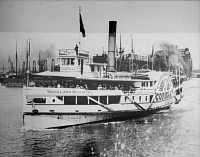 The side-wheeler, Corona (above), that carried tourists from the mainland to Edgewater Park on Grand Island's East River, burned at the pier at Edgewater on November 18, 1898 and may still be partially seen in the river today. 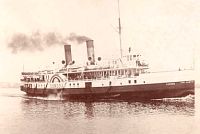 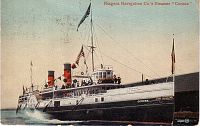 The Canadian Corona shown above is easily and often confused with the smaller side-wheeler that traveled between Grand Island and the mainland. Side-wheeler Corona feature posted at Isledegrande.com on October 11, 2007 by Teddy Linenfelser, Town Historian Comments welcome - "Email" The photos of the Corona (top), sunk off Edgewater, Grand Island, NY, are those of the "real" Corona, relating to Grand Island. Other photos of the Canadian Corona like the one below, have been erroneously posted on the internet and described as the one that burned at a pier on the East River at Kirkwood Drive. The Canadian Corona, built in 1886, was 272 feet long, much longer than the side-wheeler still partially visable in the water at Edgewater. The Canadian Corona was scrapped in Bufffalo in 1938 Interesting details of Grand Island's Corona, taken from two maritine newspapers, one dated 1870, were found on the internet and follow: CORONA , (St. P.), 1870 , Official No. U125091 Goodrich's new steamer CORONA which was built to run between Chicago and St. Joseph arrived yesterday. Her measurements are - Keel, 176' x 27, overall 184' x 44'. She has the machinery formerly in the COMET. There are 42 staterooms accommodating about 150 persons. Forward on the upper deck is the dining saloon. The nursery is aft on the main deck. The wood-work in the cabin is of pine, painted white. The moulding and carving are of a beautiful design. The cabin is carpeted with Brussels carpet. The CORONA has a black hull with white upper works. She cost $75,000. Chicago Republican April 26, 1870 CORONA , (St. P.), 1898 , Official No. U125091 Year: 1898 Date: Nov. 17 Location: Edgewater (Tonawanda) Lake: Niagara River Reason: fire Lives: Remarks: Total loss Buffalo, Thursday, Nov. 18. - The sidewheel excursion steamer CORONA is reported to have burned to the water's edge at Edgewater, opposite Tonawanda, where she was lid up at the close of the excursion business. The fire is supposed to have been of incendiary origin. The CORONA was built in 1870 at Manitowoc and brought here about two years ago and has since been on various excursion routes. Chicago Inter-Ocean November 19, 1898 This information was supplied by former Kirkwood Drive resident Tim Miller. October Storm 2006 Remembered - 2006 
Scene at the Village Inn on Ferry Road - Dan McMahon Photo - click for larger view Mention last October's surprise storm and memories of generators, no heat, and large trees and limbs down everywhere are probably what comes to mind. The first hint of what was dubbed the October Surprise was the unusual but distinct sound of cracking limbs at a constant rate on the night of Thursday, October 12th. Trees still full of leaves, became overloaded with heavy snow and many of those trees and their limbs broke under the strain. The storm left 70% of the Island without power - for days! “We’ve faired better than most,” Supervisor McMahon said at a Monday, October 16th press conference. "As of Monday, 99% of the power in the town is back on, the major exceptions being two town blocks - specifically, the north side of Love Road between Stony Point and East Park, the south side of Hennepin, and Beaver Lane are still dark but should be restored today,” the Supervisor explained. It should be noted that Deputy Supervisor Richard Crawford Jr. ran operations during the first 24 hours of the storm in the supervisor's absence. The Supervisor participated in the twice-daily conference calls with the Erie County Emergency Operating Center, and made requests for pumps, generators, and chipping crews. Specifically, four chipping crews were requested through November 1. "Even with Highway Department crews working dawn to dusk, the town owns only three chippers: simply not enough for the task at hand," the supervisor said at the time. Highway Superintendent Ray Dlugokinski reported that his department’s biggest challenge was debris pick up, which went on for weeks. Fire Chief Greg Butcher reported that two dispatchers on duty around the clock from Thursday through Monday morning in Fire Headquarters, answered more than 1,000 phone calls, with GIFC responding to approximately 175 incidents, mostly electrical hazard in nature. For more photos and a story on the Fire Company's handling of nonstop emergencies during this storm of 2006, see Columbus Day Storm Town To Take Over West River Service Road 20 Years Ago! Everything Old Is New Again!! - 2007 Posted by Teddy Linenfelser Planning was underway for the town to assume the ownership of the state-owned West River Parkway service road, according to an article by the late Marion E. Klingel in the September 25, 1987 edition of the Island Dispatch. The town board on Monday, September 21, 1987 indicated there were matters to be settled before it would accept the road. They included "the present condition of the thoroughfare which parallels West River Parkway, and the maintenance of it when it becomes town property," the article stated. The September 1987 article continues: "Reconstruction of the service road became a bone of contention between the state and the town about 1969. At a meeting in 1980 of town officials and Frontier State Park Commission and Department of Transportation officials, the highway department supervisor called attention to its deterioration. "A DOT proposal, turned down by the town board in December 1979, included widening the 8-mile stretch and providing four-foot shoulders at a cost of about $2.5 million. "Condemnation proceedings of West River Road filed in 1948 "assured the people in giving up their land they would have access to it and to the parkway," the town attorney reminded at that 1979 town board meeting. See "Same Story 20 Years Later." See also "$1.6 Million West River Road Project - 2007." Posted September 13, 2007 at Isledegrande.com Young Life Camp - Summer 2007 

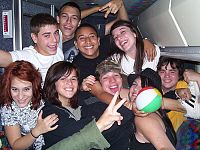

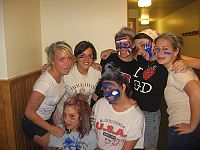
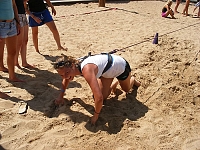

 Click photos for larger view Take a minute and imagine the best week of your life. Would it involve traveling to a far away place? Or would it mean meeting new people? Or how about trying new things you never thought possible? Well, look no further, because with Young Life camps all of these things are possible. This year’s Young Life camp was held on July 15th through July 21st at Saranac Lake in New York. High school aged kids attended the camp from places in West Virginia, Virginia, Delaware, and Western New York, including our very own Grand Island. In the past, Young Life camps for the Western New York Young Life chapters have been held not only at Saranac, but also at Lake Champion in New York, and Rockbridge in Virginia. Each camp is in a different location, and each camp offers unique activities; however, they both guarantee the same thing – that Young Life camp will be “the best week of your life”. Just ask sixteen-year-old Luke Chambers who is a high school student and a camping veteran with Young Life. So far, Chambers has been to two Young Life camps, last year’s at Lake Champion and this year’s at Saranac Lake. Chambers decided that he first wanted to attend Young Life camp after hearing all about his older sister’s and his friend’s experiences. After hearing about how “awesome” it was, he wanted to give it a try. Chambers recalls of his first camp experience, “My favorite part of the first time being there is just the excitement of everything you do.” At this year’s camp at Saranac Lake, Chambers participated in activities such as swimming, sailing, canoeing, and parasailing – one of the featured activities at the location. In addition to the many activities at Young Life camps, there are many planned events that go on throughout the week. Of the events, Chambers’ favorite one involves the first night’s intense obstacle course. He says, “Where else can you do that?” Throughout the week, some of the scheduled events involve themes. Chambers admits that his favorite theme day in past was 50’s Night because, “No one really dresses up as the nerd, and I always do.” Another major part of the Young Life camping experience is “cabin time.” Before camp begins, boys and girls are assigned to cabins with cabin leaders. Throughout the week, cabin-mates bond together through the planned events during the day, and through discussions at night. Chambers recalls of his cabin experience, “Whatever happens at Young Life Camp stays at Young Life Camp. Let’s just say that me, Chris (Bidell) and Pierre [Tanguay] were all in a cabin together.” Cammy Williams, a leader for Young Life, was in charge of one of the girls' cabins during the week. She recalls of the experience, “I thought it was good, the girls really gelled.” She also said two of the seniors in her cabin really stepped up and became role models for some of the first timers by sharing their views and their faith. Williams has been a leader with Young Life for four years. She remembers the impact Young Life had on her life when she was in high school and decided that she wanted to be a good role model and make an impact on other kids' lives. In her four years as a leader at camp, Williams’ favorite times have been cabin time with the girls in which they talk about life and discuss the issues of teens today, and doing group activities such as the challenging ropes course. Williams feels that teens should go to Young Life camp, “For a spiritual reason – to learn about their faith, and know the truth, or even to deal with any issues that they might be going through.” Williams feels that camp is a good way to show that teens do have something good to offer and it gives them the ability to become stronger people. Because Young Life camps are only for high school students, many kids do not get to experience their first times as a camper until the ninth grade. Max Hyland of Grand Island who was a first timer at Saranac said, “I decided to go to camp because my sister went to it and I heard it was fun and cool. The best part was spending time in the cabin, meeting new people, and parasailing.” Rich Karpie, another first timer to Young Life camp commented, “I really had no clue what it [camp] was all about, I heard about it from Kevin [Kulikowski] because he’s my basketball coach. Karpie recalls spending his time at camp, “wakeboarding and parasailing.” Megan McInerney, yet another newcomer to Young Life camp said, “I heard about camp at Young Life and how fun it was . . . my favorite part was tubing. And I met a lot of new people.” Erik Billica, a recent graduate of Grand Island High School, has attended all four Young Life camps during his high school years. Out of all four years, Billica will always remember his fun times on the ropes course and how it gave him, “an adrenaline rush.” Chris McDonnell, is another fourth timer to Young Life camps. He first heard about camp from his aunts and his cousins and they talked him into it. Looking back, McDonnell recalls his favorite camp memory as, “Being a second timer and being able to play the leadership role. You can show the first timers a fun time by letting them go first for everything.” While some of these campers were first time newcomers, and others were seasoned veterans, all unanimously agreed that Young Life camp was by far the, “Best week of your life.” Started back in 1941, Young Life originally sought to reach out to kids who weren’t interested in the church. Not long after, the Young Life “club” idea was developed showing kids that faith can not only be fun, but also life-changing. Today, leaders are able to meet teens on their turf to discuss life and any issues that may be facing teens today. Kevin Kulikowski is not only a Grand Island resident, but the Area Director of the Buffalo North Towns for the Young Life Organization as well. Kulikowski helps out with the camps each summer and he is also in charge of leading the Young Life weekly meetings that usually begin in early fall. Kulikowski encourages any kids or parents to contact him with any questions at his e-mail address kkny42@aol.com, or by calling him on either his work phone at (716) 825-6702, or on his cell phone at (716) 207-2701. Kulikowski also urges any parents with questions to contact the Young Life Committee Chairmen, Jack and Diane Quinn, at 773-7453. Any additional information concerning Young Life or Young Life Camps may be found on the Young Life official website at www.younglife.org. As stated on the website, “Whether kids are seeking answers, or just acceptance, Young Life is there for them, armed with a desire for fun and the ultimate message of hope.” Shelbey Bidell is a journalism student at Buffalo State College GIHS Graduates Moving On Part III - July 2007 



(left) Sean O'Brien, Heather Buzzelli, Zach Tondera, Bridget Geroge by Shelbey Bidell Over the past couple of weeks, members of the 2007 Senior Class of Grand Island High School have been interviewed and asked about their fondest memories from the past and their aspirations for the future. As the recent graduates make the transition from young adults to tomorrow’s leaders, most, if not all, are taking the time to enjoy the summer ahead. While many students are spending his or her time working, others are attending countless graduation parties and savoring every last moment possible with friends. It is the end of an era, and the beginning of another for new graduates. And so far it seems that each student is making the most of their last summer together by spending it with the friends who they will never forget. Sean O’Brien, 18, is a recent graduate from Grand Island High School. Although O’Brien doesn’t have a specific favorite memory from high school, he will always reminisce about everything that happened during senior year including spending time with his friends. During his high school years, O’Brien participated on the JV lacrosse team, and played center on the hockey team all four years of high school. O’Brien is also recognized for earning the Academic Letter, and making honor roll. Throughout high school O’Brien stated that his favorite teacher was math teacher, Mr. Andrew Bowen because, “He was funny and cool.” This summer O’Brien will be working at the Beaver Island Golf Course, and he will be planning a trip with his friends to South Carolina. In the fall, O’Brien will attend the University at Buffalo. Although he is declared as an engineering major, O’Brien admits that he is undecided about what he really wants to major in. O’Brien said that he is looking forward to college mostly to, “see the differences between college and high school.” In the future, O’Brien can see himself either staying local or moving down to South Carolina. As for the senior class of 2008, O’Brien says, “Don’t not try.” Seventeen-year-old Heather Buzzelli is another former senior who walked across the stage this past June. During her high school years, Buzzelli played on the JV and Varsity soccer teams all four years. Her favorite times on the soccer team were when the team went to the State Championship two times in a row, because it meant that she got to miss a day from school. Aside from her years as a soccer player, Buzzelli also participated on the track team her sophomore year. Academically, Buzzelli made honor roll several times throughout her high school career. Looking back, Buzzelli said that what she’ll miss the most about high school is, “Being able to see all of my friends everyday.” Her favorite teacher at the high school was chemistry teacher Mr. Rob Collard because he was funny and easy to talk to. And it helped that he always had Jolly Ranchers in his classroom. Over the summer, Buzzelli will spend her time working at Factory Brand Shoe, as well as training for soccer in college. For the fall Buzzelli will further her education at Buffalo State College, majoring in criminal justice. Down the road, Buzzelli can see herself still staying around the Buffalo area, hopefully doing something in the criminal justice field. Buzzelli advises next year’s senior class, “Don’t take it [senior year] that serious and have fun; it goes by too fast.” Another fellow graduate from the 2007 senior class at Grand Island High School is eighteen-year-old Zach Tondera. Throughout his four years of high school, Tondera actively participated on the JV and Varsity football teams as a receiver and a safety. Because of his involvement in football, Tondera was recognized as a Scholar Athlete and he was able to earn his Varsity Letter. His favorite memory with the team, as well as his favorite memory of high school was when he got to go with the team to Ralph Wilson Stadium his junior year. The Grand Island football team had won the second round of the playoffs that year beating Sweet Home High School, and moved onto Ralph Wilson Stadium to play in the final rounds. Tondera said that although he didn’t play in the game, it was still a memorable moment because he was there as part of the team and he got to watch his friends play from the sidelines. During his high school career, Tondera’s favorite teacher was science teacher, Mr. Tim Williamson because, “He made everything fun – it wasn’t just pure learning.” Academically, Tondera is recognized for earning a scholarship his junior year from Clarkson University for engineering. He has also achieved a Presidential Award and was acknowledged for an Emedco scholarship. In addition to his achievements, Tondera made the honor roll all four years of high school. In the fall, Tondera will attend North Carolina State University majoring in engineering. Tondera said that he chose to go to North Carolina State because of the weather. He is looking forward to meeting new people, and experiencing the whole college experience. For the rest of the summer, Tondera will be keeping busy by going to his college’s orientation, and hanging out with friends for, “one last hurrah.” In the future, Tondera hopes to be living in North Carolina with an engineering job, and can see himself settling down and starting a family. Tondera advises next year’s senior class to, “Experience everything you can because it won’t last forever; it goes by fast.” Bridget George, 17, is yet another recent graduate from Grand Island High School who is looking forward to the future ahead. Over her four years at Grand Island, George was actively involved with the cross country team. Her favorite memories of high school even include all of her times with the team getting together for Saturday meets and hanging out the night before pep rally. Because George was on the cross country team all four years, she will always remember the close bonds that she shared with her teammates. She said, “Being on a sports team always makes high school more fun…I couldn’t imagine high school without it [cross country].” George even received the Sportsmanship Award as a junior for cross country. Aside from her years as a cross country runner, George also did softball her freshmen, sophomore and junior years, and did outdoor track her senior year. This summer, George will be working at Adrian’s on Grand Island, and running as part of her training before college. She also plans on spending much of her time with her friends because many of them are either going away to college or they are leaving earlier in August. In the fall, George will attend Medaille College majoring in Communications. She will also continue her running career doing cross country at Medaille. “I’m looking forward to meeting new people and experiencing new things and experiencing the college life,” George said. She said that she sees college as the first step of officially becoming an adult. “I’m scared and excited,” George admitted. In the future, George hopes to have a good job possibly in radio or TV somewhere around the Western New York area. She also hopes to be making good money, be married, but most importantly she hopes to be happy and have a nice life. As for next year’s senior class, George advises, “Enjoy the time you have because it goes by super fast, especially after January. Have as much fun as you can.” With the summer halfway through, now is the time that the former seniors will spend hanging out with friends, re-living the good times, the bad times, the times that some wish to be forgotten, and the times that some could never forget. It is the time to say all of the things that should be said, because it truly is the last time for a long time that the senior class will all be together unified as one. As the summer draws closer to an end and the senior class of 2007 begins moving on, each person will take with them the cherished memories of their past, and carry their friends with them close to their hearts in the future. GIHS Graduates Moving On Part II - July 2007 

 (left) Paul Holler, Sam Chambers, Chris Nole by Shelbey Bidell A couple of weeks ago, the Grand Island Senior High School senior class of 2007 walked across the stage eager and excited to enjoy the summer ahead, and embrace the next part of their lives. With every student interviewed throughout this summer, it’s easy to see how different each person is. However, it is also clear to see how similar they are in that each graduate has goals to look forward to for the future, and memories to look back on from the past. Paul Holler, 18, is a recent graduate of Grand Island High School. Throughout his high school career, Holler was actively involved in many sports such as volleyball, tennis and swimming. He recalls his favorite memory being the night before pep rally when the entire volleyball team met at his house. He remembers that night in particular because it was the night of Buffalo’s infamous “October Storm”. Holler said that although pep rally was cancelled the next day, the team still made the most of it by going outside and building a seven-foot-tall snowman. In addition to his fun times with the team, Holler was also named to the 3rd All NFL team for volleyball and swimming his junior year, and made the 1st All NFL team for volleyball during his senior year. Because of his commitment to school and sports, Holler has been named as a scholar athlete for swimming and volleyball as well. Over the summer, Holler plans on spending his time wakeboarding, going to his cabin, attending Young Life camp at Saranac Lake, and having lots of bonfires. As for high school, Holler said his favorite memories include, “Study hall with Chris [Bidell] and the senior prom night after party.” He also commented that his favorite teacher was Mr. Koppman, an architecture teacher at the high school. Holler said, “He wakeboards, and he’s always really nice and carefree.” This fall, Holler will attend Medaille College for Business Administration. He will also be playing volleyball at the Division Three College. In the future, Holler can see himself moving down south managing a business. As for next year’s class of 2008, Holler advises, “Don’t work too hard or else you’ll miss the experience.” Eighteen-year-old Samantha Chambers is another Grand Island High School student who graduated last month. Throughout her high school career, Chambers was involved in many different activities. In her freshmen year, she participated in the art club, lacrosse and was the Secretary for her class. During her junior year, Chambers was a member of the school’s choir, and was also the vice president of her class. For her senior year, Chambers was once again Vice President of the class of 2007. Her duties as vice president included doing several fundraisers to raise money for the senior class’ different events, running the school’s annual talent show, finding the guest speaker for the senior luncheon, and lastly, organizing the senior prom. As vice president, Chambers was also given the responsibility to lead the students, faculty, family members and friends in saying the Pledge at the graduation ceremony held last June at Kleinhans Music Hall for the senior class. During her high school years, Chambers was involved in many of the school’s musicals. She even recalls her favorite memory of high school being ‘Seussical the Musical’ because it was a wacky production. Over the summer Chambers hopes to take a few road trips with friends, as well as plan a trip to Europe. She will also be working at Anderson’s and at the School for the Visually Impaired working with a girl who has cerebral palsy. In the fall, Chambers will be attending the University at Buffalo majoring in psychology; specifically clinical psychology. She is hoping to possibly double major or minor in art or art therapy. In the future, Chambers sees herself attending grad school, settling down, and hopefully happy. She would also like to spend her time traveling to different places and learning about different cultures. Lastly, Chambers advises to next year’s senior class that, “It’ll go by way too fast, don’t take it [senior year] for granted, and appreciate the people around you; because before you know it, high school will be over.” Chris Nole, 17, who also walked across the stage at Kleinhans last month, is looking forward to the future ahead. During high school, Nole participated on the Junior Varsity and Varsity lacrosse team. He said that although the team didn’t perform that well throughout last season, they were still able to look forward to games and practices, all while having a good time. In addition to lacrosse, Nole was also a member of DECA, the high school’s club for business and marketing students. Through DECA, Nole was able to place third at the state competition, and earned a scholarship through the organization. Looking back, Nole recalls his favorite time of high school was the senior’s Class Day. He said that he will remember that because it was the day that, “You know you’re two days away from being done, and it’s the last day of being all together.” Nole’s favorite teacher from high school was English teacher, Mr. John Arnone. “He was definitely the most down to earth, and he was able to put everything into perspective,” Nole commented. Over the summer, Nole plans on working at a marina and at a Chili’s Restaurant, and he will be going to Young Life camp at Saranac Lake. For the fall, Nole will attend the University at Buffalo for business. He is looking forward to college mostly because of the new kind of freedom, as well as experiencing that rush of getting to know new people in a new environment. In the future, Nole plans on working for an advertising agency either doing television or radio commercials. With his final words, Nole says to the senior class of 2008, “Lay back and have fun…and do a better senior prank.” While the senior class of 2007 recalls their memories of the years gone by, they are all anticipating the unknown that lies ahead. It’s still a long summer, and there are still many more students’ stories left untold; however, each person is similar in that they each share memories and they each share goals in life for the future. Shelbey Bidell is a journalism student at Buffalo State College Murder Of Well Known Reclusive Farmer Made Headlines 50 Years Ago by Teddy Linenfelser 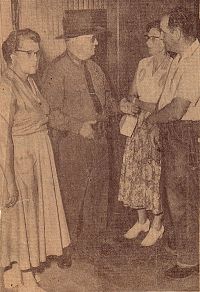
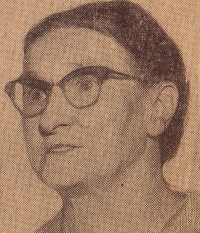 (left photo) Deputy Conrad Scherer talks to relatives - a niece Mrs Gladys L. Ihle (left), a nephew Mr. Grehlinger and his wife questioned - Click this photo for larger view (right photo) Neighbor Bertha Hardy, last to see victim alive 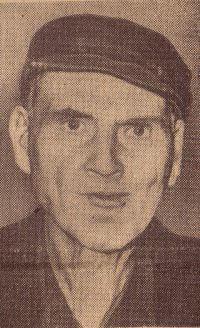
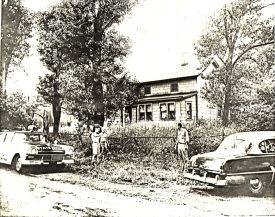 (left) Fred Grehlinger - body found in farmhouse - (right) Scene of the Grehlinger murder July 30, 1957. Art Haller (left) with Roger Kaiser, among first firemen on the scene. - Click this photo for larger view The unsolved murder of 85-year-old Grand Island recluse, farmer and former school board member Fred Grehlinger remains in the minds of many of us who lived here in 1957. The victim of a vicious beating, left with his hands and feet trussed with tape, he probably died at the hands of someone he knew, newspapers reported at the time. He was found by neighbors in his Ransom Road home about 2:30 p.m. Tuesday, July 30, 1957. The Medical Examiner, James F. Benedict, using the words 'gross brutality' in issuing a homicide verdict, said he had been dead between 12 and 18 hours. Immediate cause of death was listed as shock due to a cerebral concussion. The victim suffered a brain concussion, fractured back, ribs and arms and extensive hemorrhaging of the left shoulder and neck. Sheriff Robert Glasser claimed that Fred was attacked by one strong man or two men and that a blunt instrument was used in beating Grehlinger, possibly someone's foot. From the beginning of the investigation the Sheriff said that there were "two or three people who for some reason or other look suspicious." He suggested at the time that the several drawers pulled out may have been done to make it look like a ransacking job. The old farmhouse had been remodeled to accommodate two families and Grehlinger lived out his bachelorhood in one room. A newspaper report stated that that room was packed with the accumulation of a lifetime. Sheriff Glasser and Under Sheriff B. John Tutuska carted boxfuls of junk and papers out of the house in hopes that some of it which might have been pulled out of drawers would reveal fingerprints. An FBI laboratory examination of several articles taken from the scene had failed to reveal any fingerprints. Mr. Grehlinger was wearing two pairs of trousers, one corduroy and one denim, when he was found slain. He also wore two shirts, one blue denim and one tan, and high boots. Valentine Konefal, 67, one of the closest neighbors who lived about one-quarter mile from the Grehlinger residence, thought the victim had had a heart attack when he found him. Konefal found the front door open when he arrived at the farmhouse with some green beans for the elderly Grehlinger. Mr. Konefal called the Grand Island Fire Company and the Company dispatcher, Marion Klingel sent Fire Company rescue squad members Roger E. Kaiser and Robert L. Altschaft to the residence. Realizing that Mr. Grehlinger was dead, Mr. Altschaft, a deputy sheriff, called his office for assistance. White tape, about 1 1/2 inches wide, bound Mr. Grehlinger's feet and his hands crossed behind his back. He was discovered lying on his side near an old horsehair couch, one end of which was raised at a 45-degree angle, which he used as a bed. An open safe in the bedroom was untouched. Signed statements were taken from seven persons in August 1957, the last of which was taken from Norman E. Theiss of Wallace Drive. Capt. Harrison J. Conrad directed an early morning hunt for money after a tip that the couch might contain a "hoard of wealth." The possible location of the old man's money was indicated to Capt. Conrad during a four-hour interrogation he made of Mr. Theiss, a friend of the victim. Theiss volunteered to make a statement and have his fingerprints taken. The questioning was carried out from 9 p.m. Wednesday, July 31st to 1 a.m. the following day in the Grand Island Town Hall. Sheriff Glasser said Theiss introduced himself Tuesday afternoon during the initial investigation of Grehlinger's home. "He asked to talk to a police officer," the Sheriff recalled, "and said he knew a lot about the old man, whom he had visited on numerous occasions. He said they talked mostly about Grand Island's history." Newspaper reports stated that Theiss first claimed he could take Capt. Conrad to the house and show him where Grehlinger had probably hidden money. However, the search was made without Theiss being present. The search had centered on the couch because deputies were told by Theiss that "Mr. Grehlinger never would leave the couch when anyone was there." Mr. Theiss and Rudolph Ziehm Jr. of Niagara Falls submitted voluntarily to lie-detector tests, however, results were inconclusive. "Our investigation has accounted for a goodly portion of the $53,000 in property sales Mr. Grehlinger is believed to have made within the last year or so," the Sheriff is quoted as saying. Authorities were seeking a blue or green two-tone Buick station wagon which was seen parked off the road in front of the Grehlinger farm house Monday, July 29, 1957. Witnesses recall seeing the station wagon there about 8 or 9 p.m. in the evening. The time coincided with that established by the medical examiner as the approximate hour of the killing. "We found a few latent fingerprints on some items in the place," Sheriff Glasser said, "but none were readily identifiable." Fingerprint work continued by the Kenmore police through procedures set up by the Erie County Law Enforcement Coordinating Committee. Among items checked for fingerprints was an empty brown cloth bag found in high weeds outside the farmhouse. Police believed the cloth bag might indicate the murderer found what he was looking for and discarded the container. Eighteen members of the Grand Island Volunteer Fire Company, seven Sheriff's Department police and a state trooper scoured both sides of Ransom Road between Stony Point and East River roads in an "inch by inch examination of grass, ruts and mud puddles" on the evening of the murder. Three items at the top of the search least were Grehlinger's billfold, his change purse, and a spool of two-inch wide adhesive tape of the type used by the killer to bind the victim's wrists. Known as the largest taxpayer on Grand Island at one time, Grehlinger never married but was said to have been quite sociable in earlier years. Fred had lived in an old farmhouse and at one time farmed a great deal of his property at 993 Ransom Road. At the time of his murder, the place looked abandoned. Barns lay collapsed, weeds grew waist tall and the old house was filled with clutter and cobwebs. It was assumed at the time of his death that he was sitting on his battered couch watching television. He owned several rental houses and it was always assumed that he had large sums of money in the house. Bertha Hardy, 70, a widow and lifelong resident of the Island, paid her monthly $25 rent to Mr. Grehlinger the day before his brutal death. Sheriff Glasser and investigators continued to favor the theory that Grehlinger was murdered by someone who wanted to steal money from his home. Another murder, that of David Halbren, 65, of Patchogue, Long Island in July 1957 in Buckhorn Island State Park, thought to possibly be connected to the Grehlinger death, had no clear link. On Friday, August 2, 1957, a funeral was held and the body laid to rest in the White Haven Cemetery. Rev. Harvey P. Schooping said at the time: "Fred Grehlinger had several good qualities to commend him. A bit old fashioned, he resented the push and drive of progress and change. He loved the good earth and growing things - tilling, planting and watching things grow." The pastor traced the Grehlinger ancestry to pioneer days on the island. He pointed out that Mr. Grehlinger had lived his entire life on Ransom Road on Grand Island where he farmed with his brothers and in recent years carried on alone. About the house, cluttered, with few modern conveniences, only one electric bulb in a lamp provided illumination. A relative said that Grehlinger had recently asked the wife of a nephew to bring him "some new pink bulbs because the others hurt my eyes." The living room also contained numerous chairs, a coal-and-wood stove used for heating, a piano, old-fashioned radio, clothing, crockery, dishes, some of which were broken and boxes of personal papers. On the wall was a portrait of his father, Louis Grehlinger. An old wood-burning cook stove in the kitchen stood side-by-side with a modern white-enameled range. The kitchen was littered, but apparently not disturbed by the intruder. On one wall was an old telephone in an oaken wood box with a hand-crank to signal the operator. However, it had not been connected for years. A Buffalo newspaper reported that preliminary investigation by Sheriff Glasser revealed two bank books, one of which showed a balance of about $1700. Two bank statements were found on the littered floor among Christmas cards dating back 30 years. One showed a balance in July 1956 of $4.45 while the other, dated Sept. 25, 1956, showed $1802.46. In September 1957, a newspaper report stated that not all Grehlinger's assets had been located. About $65,000 was eventually found in banks. Mr. Grehlinger was born on Grand Island in a house located near the one in which he had lived more than 60 years. Eighty-one-year-old John Consier, a neighbor, had known him since childhood. He and his grandson, Robert, 29, last saw him about 2:30 or 3 p.m. Monday afternoon, the day before the murder. Mr. Consier recalled that Mr. Grehlinger bought the land in which his house stood, for $50 an acre for 100 acres. "It was covered with white ash, and in the first winter he cut enough wood off of it to pay for the land," Mr. Consier said. Mr. Grehlinger prospered as a farmer and in later years acquired holdings believed to have totaled approximately 1200 acres, including some on the west side of the island. He had recently sold considerable land to Cinderella Estates, a Niagara Falls developer, and to the New York State Thruway. His acreage at the time of his death was estimated to be about 900 acres. In October 1957 the seven heirs of the Grehlinger estate confirmed the sale of the 122-acre Ransom Road farm as sold at auction for $25,100 to Edward Chapin of Chapin Construction Company. An undated Buffalo Evening News story reported that Mr. Grehlinger's assets were listed as: Real estate, $180,260.50; cash, $43,160.50; and miscellaneous property, $27,531.90. A $500 reward was posted in October 1957 for information leading to the arrest and conviction of the killer of Fred Grehlinger. The following was reported in the August 22, 1957 issue of the Island Dispatch: A check for $32,995.79 from the murdered Fred Grehlinger’s estate has been found in a Niagara Falls branch of the M&T Bank. The money represented proceeds from 105 acres of land sold by the murder victim to Cinderella Estates, a Niagara Falls real estate firm. The sheriff’s office was previously unable to account for this missing amount. Finding the bank account seems to confirm the theory that Grehlinger deposited his money in banks and did not keep large amounts of cash at his Ransom Road farmhouse. The following details were taken from an August 2, 1957 Buffalo Evening News article by Ed Hale: The television set is the one modern piece of furniture in the sagging house. . . One deputy sheriff stated, "For a recluse, this fellow certainly had quite a few visitors or people just passing by the place.". . . New shirts with Christmas wrappings were found unopened. . . A neighbor would bring him four loaves of bread every Saturday and cut wood for him in the winter. This began after another neighbor found the old man wrapped in a thin blanket just before Christmas a few years back, almost frozen to death. "Is the slaying of Fred Grehlinger, a wealthy Grand Island farmer going to be the perfect crime?" a reporter wrote about a week after Grehlinger's death. Today, fifty years later that question is still unanswered. Posted June 28, 2007 at Isledegrande.com Village Hot Dog Stand – A Taste of Island History - 2007 Story and photos by Christine Stange 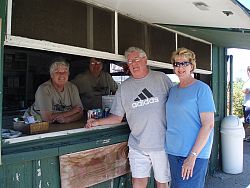

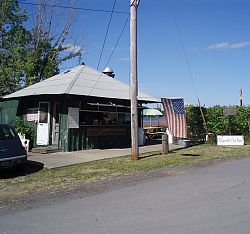 Click photos for larger view (left) Kathy & Vic Podgorny - (center) Marcy and Paul Malecki The Village Hot Dog Stand opened last weekend (June 23rd) for another season of serving up delicious summer fare accompanied by good old fashioned hospitality. Native Grand Islanders Sharon Nichols and Barb Zafuto will be operating the stand at the foot of Ferry Road, overlooking the Niagara River for their fourth consecutive year. On the menu, hungry customers will find hamburgers, cheeseburgers, hot dogs, Italian sausage, chili dogs, macaroni/potato salad, clam broth, chips, root beer floats, ice cream and pop at reasonable prices. At no cost, Sharon and Barb, known by their friends as the “Long sisters” will provide customers with the rich history of the Bedell House, an Island recreation icon that once graced the site on which the hot dog stand now sits. As customers relax on the riverside patio, they can almost imagine the excitement of yesteryear’s ferry boat passengers coming to the Bedell House to enjoy the beauty of Grand Island. The original Bedell House Hotel was built by Ossian Bedell, known as the “Duke of Grand Island” in 1877. It burned in 1886, was rebuilt and burned again in 1935. The newly built Grand Island Bridge, not yet open to the public was utilized by the Sheridan Park Fire Company to assist the local residents in battling the 1935 blaze. The structure was not saved but the event did mark the first crossing of the Grand Island Bridge. The Bedell House annex, a large tavern, also built around 1877, burned in 1988. Historic postcards of the Bedell House, River Lea and the Grand Island Bridges are for sale at the Village Hot Dog Stand. Sharon and Barb will be welcoming customers now through Labor Day. The stand is open Thursday, Friday, Saturday and Sunday from 11:30 a.m. to 6:30 p.m. Why not stop by and enjoy a taste of Grand Island history? Posted June 28, 2007 at Isledegrande.com Islettes Elite Continue Long Tradition of Baton Twirling - 2007 Photos/Story by Shelbey Bidell 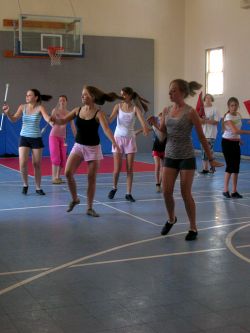 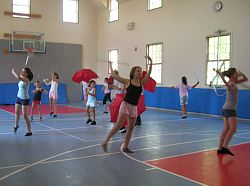
 Islettes Elite practice for AYOP competition - Click photos for larger view They jump, they dance, they tumble and cheer. And this year Grand Island’s own Islettes Elite will be twirling their way into the 42nd annual America’s Youth on Parade (AYOP) baton twirling competition. The Islettes Elite, headed by Grand Island resident Heidi Sue Mumm, will be competing against 500 other teams from across the nation in hopes of winning the Parade Corps title. This year’s AYOP event will be held on July 17th through July 21st at the University of Notre Dame in Indiana. The 20 qualified girls aged six to eighteen years old will be performing in different categories such as twirling teams, drill teams, rifle teams, corps royalty, twirling trio and duets, solo twirling, and flag twirling, just to name a few. The team will be performing to songs such as Michael Jackson’s “Thriller” for the flag corps, as well as a 50’s themed performance to “Crocodile Rock.” For the Islette’s half-time segment, they will be twirling to a song from Willy Wonka and the Chocolate Factory. In addition to the numerous categories the Islettes will be partaking in, two members of the team will be competing in the Miss Majorette of America pageant. The reigning Miss Majorette of America is the Islettes Elite’s own instructor, Chelsea Russell. This year, twirlers Rebecca Sobol and Alissa Bailey are representing the team in the pageant in hopes of winning the Miss Majorette title. Sobol, 17, has been twirling with the Islettes for 14 years, and has served as a team captain for 11 years. Sobol has earned several awards throughout her twirling career including the Director’s Award and the Most Valuable Islette Award. She will be competing at the AYOP at the intermediate level, and will also be entering the Miss Majorette of America pageant for the fourth time. Currently, she is the reigning Intermediate Miss Majorette of New York. Sobol said that she’s most excited about the pageant and performing all of the new routines at the AYOP. Alongside Sobol at the Miss Majorette of America pageant is fellow twirler fourteen-year-old, Alissa Bailey. Bailey started baton twirling after she saw the annual Fourth of July parade down Grand Island Boulevard. She has been with the Islettes for eight years, and will be entering the pageant for the first time. In the past, Bailey has been a member of four national championship teams, and has also placed in the top ten nationally in solo events. Fifteen-year-old Molly Wynne will be another Islette attending this year’s AYOP competition. Wynne has been in the Islettes for 13 years and will be competing at the novice level. Wynne has served as an assistant instructor for four years, and has also been recognized as a Senior Captain for the team. She is most excited about “just competing” at the AYOP this year. In the future, Wynne just wants to see the Islettes keep getting more advanced, and keep doing better overall. Joelle-Yvette Scheffler, 6, is the youngest member of the Islettes Elite going to the AYOP competition in Indiana. This will be Scheffler’s fourth year on the Islettes and her third time at the AYOP. The second grader started doing baton because she said that she “Thought it was really fun.” Scheffler is also really excited to go to the AYOP at Notre Dame because her godfather, Jack, goes there. When she grows up, Scheffler said she can still see herself twirling. Although the team has completed its fundraising for the trip, each member of the Islettes needs to raise roughly $500 for the competition. Sponsors such as Pizza Hut and Fuccillo Chevrolet of Grand Island were big contributors to the team’s funds this season. The Islettes Elite was started back in 1987 by Heidi Sue Mumm. Out of 20 seasons, the Islettes have competed at 15 AYOP competitions. This season Mumm teaches over 55 girls aged two to eighteen years old on the Islettes. The team practices at Historic Trinity on Whitehaven Road. Over the years, the Islettes have won seven world titles, and have had 30 top ten placings in U.S. Championships. Mumm and the Islettes were also inducted into the New York State Twirling Hall of Fame back in 2000. Mumm is not only an extremely experienced teacher, but a fellow baton twirler as well. She has been involved in the sport of twirling for 36 years. As a young girl, she recalls, “I watched the group in the Fourth of July parade and I told my mom, ‘I want to do that!’" Mumm also said some of the highlights of her baton twirling career were when she got to lead the team by blowing the whistle for the first time, and when she got to twirl in front of a banner as a feature twirler. Of all of the accomplishments Mumm has achieved, none has come close to her dream moment. Earlier this year, Mumm was invited to march in the Disney Spectro-Magic Parade at Disney World in Florida. As she marched down the street she said, “I saw the castle [at Magic Kingdom] and tears started coming down my face.” She describes the event as the moment that she got to “live her dream.” Aside from being a baton twirling instructor, Mumm is also a fourth grade teacher at St. John Lutheran in Niagara Wheatfield. She also spends her time at St. John Lutheran coaching the cheerleading squad. “I always knew I wanted to teach…it’s just something you feel,” said Mumm. She began teaching back in 1991, and she says that the best part of teaching for her has been, “Seeing the look on their faces when you’ve realized that they’ve learned something new.” Between baton and teaching, Mumm lives a pretty busy life. She said, “You have to pick your priorities, and it is difficult. The benefit for me is that I don’t have any kids….these are my kids.” In the future, Mumm would like to someday take all of the Islettes Elite down to Disney World to participate in Twirl Mania. And although her team has always placed sixth or above at the America’s Youth on Parade, Mumm would also really like to win the Parade Corps Title. As a final thought, Mumm just wanted to remind people that “baton twirling should be respected as a sport - an artistic sport.” She said, like other athletes, twirlers need to work out and they have to practice daily. And lastly, with anything in life, she said, “If it’s not fun, you shouldn’t be doing it.” The Islettes Elite can be seen performing on July 4th, 2007 at the Fourth of July Parade on Grand Island Boulevard, the parade in Lockport, and the parade held at Riverside. On July 6th, 2007, the Islettes may also be seen twirling as part of the intermission performance for "Drums Across the Waterfront" held at the University at Buffalo in Amherst. Posted June 28, 2007 at Isledegrande.com Columbus Day Storm Stories - Chapter III - June 2007 The following October 2006 "Storm Story" was submitted in June 2007 by Lilly Thompson who turned 11 on October 13, 2006 Hey, I'm Lilly Thompson. I live on Tracey Lane in Grand Island. I'm in Middle School, but I still have a pretty interesting story about October last year. The October Storm became really, truly terrible on October 13th, right? Well, October 13th is my birthday! My mom was going to give me $50 to spend at the mall for just about anything that I wanted, which was an amazing gift for me. I invited my two best friends to come with me. The weather was getting pretty terrible on October 12th, so my friends called up and said that they weren't allowed to go. This was because their parents were worried for their safety (in the weather). As if that wasn't bad enough, lookie here on the news, everyone is calling it the October Storm or the October Surprise. The weather man is saying that there's going to be at least 2 or 3 feet of snow. Now my brother, Abram, invites his friends over on my birthday to come over and hang out. It's about 6 to 7 p.m. and I'm on the computer, when I go into the living room for cake and my 5 or 6 gifts. Later, my brother and his friends make me a small treasure hunt inside the house, lit by candlelight because of the power going out. I guess my birthday party was alright, but I'd take $50 to spend at the mall any day! Besides my birthday celebration troubles, my family also lost our apple tree in our front yard. It was ripped out with its roots. In our back yard, a large, thick branch fell off of our tree. We also cooked our food over a carosine oven that we've used in other storms. When we had nothing to do, we played card games, rock paper scissors, scrabble, and so on. Posted June 28, 2007 at Isledegrande.com GIHS Graduates Moving On - June 2007 


 (left) Chris Bidell, Krista Burzynski, Christie Utz, Devan Golda by Shelbey Bidell Most of us spend around 11,000 hours of our youth in school. And almost everyone looks forward to the same thing – graduation. It is the end of one chapter, and the beginning of another - our first steps into the ‘Real World’. The Grand Island High School Senior Class of 2007 will graduate this year on Thursday, June 21st, 2007 at Kleinhans Music Hall. It’s another year gone by and another fresh batch of young minds full of hope and ambition ready to take on the next part of their lives. Some of the Grand Island seniors shared their thoughts on their final year of high school, revealing their favorite memories and aspirations for the future. While some are sad about leaving this chapter behind, many are anticipating the journey that lies ahead. My younger brother, 18-year-old Chris Bidell, is just one of the many seniors who will be walking across the stage at Kleinhans on Thursday. Throughout high school, Bidell participated in several activities such as lacrosse, rugby and the high school youth group, Young Life. In lacrosse, he played the midfield position on the Junior Varsity team. He recalls his favorite times with the team were the bus rides back from games when the team would fool around and make jokes. Although Bidell jokes that his favorite memory of high school will be “when it ended”, he did admit that he will always remember Spirit Week because, “Everyone got to dress up and be crazy.” Bidell is also recognized for winning the Senior Superlative ‘Most School Spirit’. This summer, Bidell plans on having fun by throwing a graduation party and hanging out with friends. He is also looking forward to doing a little community service this summer by volunteering as a Young Life work crew member in Virginia. This fall Bidell will continue his education at Buffalo State College majoring in history education. In the future, Bidell hopes to be living on his own, teaching history to 10th or 11th graders somewhere along the east coast. He wishes all of the seniors of next year’s Class of 2008 the best of luck. Krista Burzynski, 19, will also be graduating this Thursday. As a senior, Burzynski was involved in the Ken-Ton Cosmetology program. Through the program she became a part of the National Technical Honors Society for excelling both at Grand Island High School and at Ken-Ton. In high school, Burzynski was also a cheerleader her freshmen and sophomore years. She recalls that going to the night football games were always the best part of cheering for her. Burzynski’s favorite memory of high school was going to all of the dances, particularly senior prom with her date, fellow senior Mike Dlugokinski. This summer, she will be working at Capello’s in Downtown Buffalo. “I love my job; I actually want to wake up and go to work – it’s my dream job,” Burzynski says. In the fall, Burzynski will be attending Buffalo State College for Business. She said, “I’m looking forward to meeting new people at college, and finding those lifelong friends.” In the future, Burzynski sees herself married and working at Capello’s as a hairstylist in the Buffalo area. She advises next year’s seniors to, “Be active in school; even if it’s your last year, do everything you can.” Seventeen-year-old Christie Utz, another senior of Grand Island High School, sees her graduation in a bittersweet light. She said, “It’s sad because you’re saying goodbye to the people you see everyday, but I’m excited to see what college is like.” Utz will be attending Niagara University this fall majoring in elementary education. She recalls her favorite memory of high school being the Senior Luncheon because it was the first event that the class got to do together as seniors. As a senior Utz has received academic awards, and has made honor roll. In the future she sees herself teaching, hopefully on Grand Island. This summer, Utz is planning to have “a lot of fun” going to graduation parties and enjoying the summer with her friends. She will also be working this summer at Rue 21 at the Factory Outlet Mall in Niagara Falls. So while Utz is finding it a little bit difficult to say goodbye, she advises next year’s senior class of 2008, “don’t let drama stop you from having fun. It’s senior year - just go all out.” Devan Golda, 17, is yet another senior who will also be joining her fellow classmates on stage at Kleinhans. In high school, Golda received an Academic Excellence award, and also made honor roll. She wasn’t involved in too many high school activities; however, she was an active member in her church and youth group. As far as graduation, Golda said that, “I’m excited to get out and move on. It feels like I’ve accomplished something.” Throughout her high school career, Golda said that her favorite teacher was English teacher Mr. John Arnone. She said, “He was an amazing teacher. You could tell that he really loves his job. He just made you want to learn.” Even though Golda is excited to move on from high school, she said that she will miss seeing the same people everyday at school because she probably won’t see them all the time after graduation. For the summer, Golda is going to be babysitting and attending Darien Lake’s Kingdom Bound. In the fall she will be attending Niagara County Community College (NCCC) to take classes dealing with graphic design and advertising. In the future, Golda can see herself staying around the Buffalo area because most of her family is here. For the class of 2008 seniors, Golda said, “Get involved as much as you can. It’ll make high school way more fun. Make sure you have school spirit, especially during senior year, and make sure you do well in school.” These are just a few of the many seniors who will be attending graduation this week. While each one of them have different interests and are choosing different paths, each one is anticipating their next steps into this journey called life. It is a long summer, and there will be many more seniors with many different agendas; however each and every person will carry some part of high school with them. With graduation drawing near, and old friends saying their goodbyes, now is the time when the adventure truly begins – as the Senior Class of 2007 will soon come to find. This is the first in a series of interviews by Shelbey Bidell, Island resident and journalism student. Posted June 21, 2007 at Isledegrande.com The George Bell House: 150 Years of History  Click photo for a larger view Originally written by Ruth Stahl for the July 18, 2002 edition of Isledegrande.com Posted Again June 21, 2007 “I remember Mrs. Claus cleaning out the house and discarding a complete set of LIFE magazines. She said I could have them, but my mother told me not to ‘bring home any more junk.’ They were treasures,” said Mark Leffler, present owner of the home known as the George Bell farmhouse. It is situated at 1040-42 East River Road, commanding a view of the river and the South Bridge. The attic window is a charmer, round, with glass panels representing a flower or perhaps a four-leaf clover. The shape is carried to the front door, where rounded glass appears in the upper section. The front porch features arches, fretwork and turned pillars. The property is noted on maps of the mid 1800s and was once a large fruit farm. The acreage has been reduced to an average-sized building lot, but the house itself is mainly unchanged. Rough-hewn timbers rest on the natural stone walls of the basement: 3x6” studs support the floors and partitions. Walls are horsehair plaster over wooden lathe. The only major alteration was the enclosing of a back shed, done by Harold Claus. The house has been rewired and the plumbing upgraded. When the old roof was torn off to replace it, old horse harnesses were found in the attic and they are still there. “In redecorating we found five layers of paper on the walls. The original layer is still there,” said Mr. Leffler. His title goes back to 1848 when George Tallman sold Erastus Jones a strip six rods wide for a road for $480. There is a long list of owners. When Ira Bedell died in 1858, the property went to Ossian and Permelia Bedell. John W. Bell acquired it on March 28, 1864 on a quit claim deed, living there until 1912. At his death George Bell and his brother William each inherited a fourth of the property. It went from George Bell to another Bedell. Harold and Jean Claus lived in the house until 1966 when Harold died there. He had carried on an auto-related mail order business in the house for many years. Jean Claus, a practicing attorney, was one of the original trustees of the Grand Island Memorial Library. The couple owned an early 1954 Corvette, the first one sold by Alt Chevrolet. Alt bought it back and it then went to Calabro Chevrolet. (Where is it now?) When Russell Turley acquired the property in 1966, he turned it into a duplex. Mark’s father, Evans Leffler, bought it the following year. One side contains a kitchen, living room, dining room with two bedrooms and a bath upstairs. The other unit is a smaller one. The farmhouse has two brick chimneys for use with coal stoves, but now has central heat. The exterior has been resided , and the wooden outside cellar door replaced with a steel one. The garage and shed are later additions. The Lefflers are an old Island family. “My grandmother, Martha Young Zahm, remembers the Eagle Park disaster. My great-grandmother worked at the Spaulding estate,” Mark said. Mark worked for Mrs. Zora Hussey at River Lea before it became the home of the Historical Society. “I had to watch out for snapping turtles when I cut the grass in the spring. James Montannari lived there then, and he sometimes invited me to sit down and paint with him. He had steamboats that belonged to the Hussey boys, and I still have some signs from their meat market. I could show you the old Indian burial grounds there,” he said. It’s nice to know that one of the early Island homes is in the hands of someone who appreciates Island history. Islanders Write Of Florida Tornado - 2007 By Teddy Linenfelser Many Island residents here were very concerned for friends and neighbors who have relocated to Lady Lake and The Villages in Florida. According to former Island resident Gail Lazenby of Lady Lake, the Villages Fire personnel (Gail, Jason Weis and Jeff Loder), and all of the Western New York contingent who are now Village residents (Bob and Eileen Drumm, Richard and Maryann Wozniak, Paul and Veronica Shisler, Joanne McCartin, Tom and Maria Connell, Howard and Doris Danzer, Bob and Betty King, etc.) are fine and suffered no damage to their homes. Jason Weis, a member of the Villages Fire Department, wrote that a lady flagged him down saying that her friend was trapped in her house because a car flew threw her front door. According to Jason, the 911 system was having problems dispatching and were not entirely aware of what was going on. "We searched for victims in the houses we could enter. A lot we were unable to get into, total devastation. We ended up calling for four counties and two state USAR teams," Jason said. "Five minutes after the call that we cleared, the house was hit and lost the roof, garage and two outside walls. That was the scariest, all this happened less than a mile from my station." Gail Lazenby, Captain/paramedic and the Villages Fire Department’s EMS training officer, put it this way. "It wasn’t a “bad” tornado; it was a hellacious, terrible, devastating tornado! Right now, it looks like 500+ houses are significantly damaged, and another 175 homes are totally destroyed. Phenomenally, we had only minor injuries in The Villages. This tornado also hit our neighbor community of Lady Lake. Several of their mobile homes were destroyed and there were six fatalities. More tornados hit about 60 miles away with more devastation and more deaths." Gail, a former Island school district English teacher, also wrote: The “event” began with a spectacular thunder and lightning storm. I’ve never seen lightning this bright. In fact, it was almost like looking at repeated flashbulbs going off one inch from your face – one every ½ second. This lasted for nearly 10 minutes along with torrential rain. Just as the storm stopped and the atmospheric pressure changed, the tornado struck. It went through the southern end of The Villages with a half-mile swath. Beside the homes, it also destroyed the Mallory Hill Country Club (and much of the Mallory Hill golf course), and the Coconut Cove Recreation Center (a building similar in size to the fire hall). "The Grand Island Fire Co. contingent of The Villages Fire Department were out in force (and, yes, they and their families are ok). Jason Weis and Jeff Loder (both are firefighter/EMTs) were assigned to “medical engines” handling numerous calls for assistance. I was assigned to oversee disaster relief efforts and emergency medical care at the Laurel Manor Recreation Center. Folks who were displaced by the storm were directed to Laurel Manor for initial medical care (if necessary) and for shelter. Gail's email continued: "Folks from Florida Disaster Management and FEMA have both been here, and we are on the way to healing. You wouldn’t believe The Villages recovery efforts. Earlier today I watched a virtual “army” of repair/clean-up personnel descend on the affected areas – probably 800 to 1000 men and women. They came with dozens of pieces of heavy equipment and even more dump trucks to haul away debris. Homes were boarded up, roofs were covered with blue tarps, and debris was carted away. Granted, the homes are damaged (or destroyed), but every effort is made to help these folks get back to their daily lives. It is truly amazing! And all of that effort doesn’t even begin to cover the work done by volunteers. Anyone who was remotely touched by the tornado has been offered food, food, food. Some homemade. Some from restaurants who simply opened their kitchens. Within three hours of the tornado-event, we had a list of over 500 Villages homeowners who were willing to open their guest rooms to displaced tornado victims. Even though more than 1000 people were displaced because of the damage, not a single person spent the night in one of The Villages’ shelters (even though we were ready for them)." Former Tracey Lane resident, Eileen Drumm, who now resides in The Villages, wrote: "We are OK with no damage to person or property. The tornado hit about two miles south of us and did extensive damage to some of the newer Village homes there. Over 75 homes were completely destroyed and another 500 sustained some type of damage either structural or windows or doors blown out. Many of the contractors that work for The Villages came out over the weekend on their own time and picked up debris, cut trees up plus put blue tarps on the roofs of the houses that are salvageable." Remembering Back 30 Years To The Blizzard Of ‘77 Grand Island, New York - 2007 By Teddy Linenfelser - January 25, 2007 Photos submitted by Emily Dahlstrom - Click for larger view   Houses on Baseline in the Fix Road area. 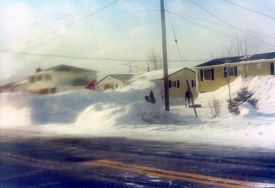 Homes on Baseline near Fix. A blizzard is characterized by driving snow, severe winds of 40 to 60 miles per hour over a specified period of time and temperatures as low as 10 degrees. Often snowstorms are called blizzards, like the squall that hit the weekend of Jan. 10-11, 1977 when actually they are only blizzard-like in nature. The Blizzard of ’77 that put Buffalo on the world weather map for all time met all the criteria for a real weather emergency. Here’s what I remember. The weather for weeks before the Blizzard of ’77 was record-breaking to say the very least. Snowfall records were broken in November and December ’76 and again in January 1977 when snowfall here surpassed the record of 50.6 inches, established in 1955. That was two days before the Blizzard of ’77 came roaring into town about noon, on January 28th accompanied by bitter cold temperatures and high winds. Island youth groups, just two days before “the big one,” began Operation Dig Out under the direction of Assistant Fire Chief Bill Wood when snowed-in fire hydrants throughout the town were dug out. There had been major storm warnings all morning. Everyone thought they would get to where ever it was they planned on going and be back by the time there was any real trouble. Not so for most. People took refuge in the Holiday Inn, St. Stephen School, the Knights of Columbus Hall and the fire hall to name a few. Erie County Deputy Sheriffs worked around the clock assisting people trapped in their cars and homes. Volunteers from the Grand Island Fire Company were able to rescue nearly 300 stranded motorists who were either taken to the main fire hall or to the Holiday Inn until it was filled. Tops Market stayed open so that the Ladies Auxiliary and Fire Company personnel could provide meals to the cold and weary travelers as well as stranded Islanders. Several members of the Ladies Auxiliary remember helping to serve numerous national guardsmen and deputy sheriffs as well as a hall full of those unable to get to their homes. Calls to the Fire Company for medication were taken care of by firemen in 4-wheel drive trucks and the snowmobilers. Lane Drug Store in the plaza on Grand Island Boulevard remained open and dispensed prescriptions at no charge. Between 60 and 65 fire company volunteers stood by at the three fire houses during the emergency with between 10 and 20 on duty at all times. The Fire Company answered hundreds of phone calls including Islanders requesting the delivery of groceries and others asking for road conditions. Highway Superintendent Norm Mrkall and his staff were on the roads 24 hours a day for days trying to make sure the roads were cleared of the drifting and blowing snow. When regular plows could not handle the heavy snow and drifts across roads, Norm and the Highway Department put the town's high lifts into service. According to Gary Roesch, fire chief at that time, the Grand Island Snowmobile Club as well as private snowmobilers and four-wheelers worked together with, and were a major asset to the Fire Company. A party planned at the Knights of Columbus never took place, however, those who found themselves stuck in their cars near the clubhouse were lucky to have the food that had been prepared for the canceled event. As for my own family, husband Jim went to work as usual in Cheektowaga, and the entire company was snowed into their building on Cayuga Drive with little to eat or drink. He called several times that first night to see how our two young children and I were doing. The following morning, after trying to get some sleep on the top of his desk, a plan was devised to get everyone out of the building. A garage door was opened, a shovel was thrown out and Jim, who was lifted up on a forklift, jumped out and tunneled through the 7-foot high drift. He made it back to the Island, changed his clothes and attempted the drive to the fire hall to join his fellow firemen in lending his assistance. After sliding his van off the road and being pulled out by a town plow, he made his way to the main hall by following that plow. Friday for some reason was a school holiday and our two children and I had planned to go to a movie with Carol Roesch and her three kids, but after listening to the warnings she and I made the decision to stay put. By nighttime our house seemed cold, probably from the roaring wind and sub-0 temperatures. I went outside to our woodpile and, truly blinded by the raging snow, dug deep with my hands until I could feel a couple logs. As I remember, my attempts at keeping a fire going in the fireplace weren’t good. There were numerous stories of those stranded on the bridges Friday, January 28, the first day of the storm. My sister-in-law, Penny Linenfelser, was on the south bridge for many hours, and sisters Virginia and Kathy Crea, were among those stuck on the north Grand Island Bridge from 12:30 p.m. to 6:30 p.m. Islander Marie Vallina, with the assistance of Dr. James Dunlop of Grand Island, gave birth to a son, Jason David Vallina, on top of the north bridge at the height of the blizzard of ’77. The baby was born in an ambulance at 9:03 p.m., January 28th on the way to Niagara Falls Memorial Hospital. Husband, David, was stranded in Buffalo at the time. Blizzard Paralyzes WNY, Kills 7, Strands Thousands, read the Buffalo Evening News headline on January 29, 1977. The Courier Express was not published on the 29th, the first time since 1934 that weather interrupted its publication. Isle schools were closed for seven days making it necessary for students to attend on February 18th and 21st, previously scheduled as Patriots Day holidays. The storm that began on a Friday gave a brief reprieve until Monday when the weather became stormy and firefighters were back at their hall joined by the snowmobilers and four wheelers. On two separate occasions fire company wives and members of the Fire Company Ladies Auxiliary served National Guardsmen, who were working with the Island’s own snow fighting equipment. Life was somewhat back to normal by Tuesday morning for the firemen and everyone else who had pitched in to battle Old Man Winter ’77. In the aftermath of the storm, 82 license plate numbers were listed in the local paper for people who left cars standing on Isle roads, much to the hindrance of our Highway Department’s efforts of snow removal. The town board applied to Washington for $52,567 in blizzard-related funds to cover overtime for the highway and other town workers who were on the job in 22-hour shifts during the blizzard. Food stamps were dispersed from the main fire hall in mid-February and lines were long. Among private contractors who assisted the US Army Corps of Engineers in the massive job of clearing snow from over 3,000 miles of roads in seven western and two northern New York counties including Grand Island were Paul Long’s Landscape of Love Road and Don Vacanti of Bronson Road. Fire Chief Gary Roesch, Highway Superintendent Norm Mrkall and Supervisor Ray Griffin all commended the people of Grand Island in the way the community came together in a mutual effort to help where they could. The Buffalo area’s reputation for bad winter weather was reinforced and no wonder. The state of Alaska had warmer weather than we did for a full two weeks before our now famous blizzard reminded us what winter was all about. Editor's Note: The following stories recently submitted to Isledegrande.com, are from Islanders past and present. Bob McMoil, GIHS Class of 1966, wrote from Mound, Minnesota: I can remember it very well. I did not live on the Island at that time. I was living in Amherst and I was a member of the Ellicott Creek Fire Department. We were in our station for four days and nights. We had fires in the blizzard and rescue calls. I did monitor the calls on Grand Island during that time. My parents still lived on Jenell Drive. I kept in contact with them to make sure they were alright. For those of you who did not live on the Island at that time, the people who did can tell you that they were in good hands with the Grand Island Fire Company. They are still the best. I was fortunate to be a member of the Company for about 12 years. I still read the fire reports on the Isledegrande.com web site and stop by to say hello when I get back to the Island for a visit. I will be watching to see what everyone did during that storm. Billy Williams wrote from Venice, Florida: I remember it well. Went to work in Lancaster that morning in my 69 Caddy coupe-Deville. By noon it was coming down so hard you couldn't see past the hood. Was able to get behind a tractor trailer heading down the Youngman and made it all the way to the Grand Island Bridge about 3 p.m., after moving a couple of abandoned vehicles out of the way with the truckers' help, only to be refused access to the bridge. I had let the air out of my tires to the point where I knew I could make it over to my home but had to detour to North Tonawanda. Had a CB in the car and was able to get word to my family as to where I was headed. Made it to the VFW in North Tonawanda and spent three days there sleeping on a pool table. We did have food and plenty of beer to keep us going though. Came out on the 3rd day and couldn't find my Caddy (how do you lose a Caddy???). Finally found it under a mound of snow that was deposited by a plow and was actually able to dig it out and get it started so I could make it home. Was great to sleep on a bed finally. I have since moved to Florida (no snow) after spending 28 years on the Island (1967-1995) with my wife Donna (Turner) Williams and daughter, Karrie. Peter Steinlein wrote from Virginia Beach, Virginia: My memories of the Blizzard of '77 were this. I was working with my father at Certo Brothers. Was stuck there for a few days and nights, sleeping in a beer truck we had in the shop at the time. We survived on beer and Honey's Pizza that Mr. Certo sent one of his sons after. Finally when the weather cleared, my father drove Dave Gingher home who was working there as well. I remember being astounded at all of the snow piled in front of our house from the Kaegebein School parking lot. Then in April 1978 my good friend Jack Steckelberg drove me down here to Virginia Beach in his CJ5 jeep. I have been here ever since. Thanks for the ride, Jack . Island resident Emily (Kunkel) Dahlstrom wrote: I was a student at Bryant and Stratton in Buffalo. When I left the school at around 3 p.m., big fluffy snowflakes were coming down. The snow came down more and more furiously as I drove, until visibility was near zero. The Niagara section of the Thruway was particularly bad, as the wind came in across the water. There would be momentary lulls, followed by big sheets of snow. I did make it to the bridge, where I sat in line with all the other cars. They weren't allowing us to cross. I was beginning to wonder if I should shut my car off for awhile to conserve gas when I noticed the truck in front of me was rolling backwards towards me. I tried honking but it didn't seem like that driver could hear me above the wind. I wondered if I would be safer inside or outside my car. He wasn't moving very fast towards me, but it sure was a big truck! Fortunately the truck driver next to me noticed my dilemma and honked his horn. It was a big long blast that nearly shot me out the top of my car, but the truck in front of me did put his brakes on. I gave the driver next to me a thumbs up. I was in desperate need of a bathroom by the time traffic started moving. They were diverting us off the thruway on to River Road. I made it as far as the Isle View where I parked and went in. I used their bathroom, but didn't have any money to get anything to eat or drink. The place filled up as more and more refugees came in. I spent the night there, perched on a barstool listening to everyone's stories. One snowmobile driver told how as he was driving along he felt two bumps. Looking back he figured out that he had just gone over two cars. I persuaded a snowmobile driver to take me back to the bridge, but we broke down and I had to walk back to the bar. In the morning people went out to start their cars, and we found that anybody who had parked into the wind now had snow packed on top of their engines, and they couldn't start their cars. I was lucky. I had parked up against the building. I started up and headed home. When I got to the toll booths, there was a policeman there who told me only some Island exits were open. I headed for North Colony Road instead of going all the way across the Island to my own home. When I got to North Colony, the road was blocked half way down by a huge drift of snow. I parked behind it along with a few other cars and crawled over the top of it. At the top of the drift I found about 4 inches of a car antenna sticking out. I was crawling over a car! I spent that day and night at my fiancé's house. The next morning when the plows arrived, we rushed out to move our cars and the plow driver was very grateful that we informed him that the drift in the middle of the road had a car beneath it. My fiancé, Gary Dahlstrom, was stuck in Batavia for the storm. When he called home to let his Mom know where he was she told him that his friend's father was also in Batavia, and he had a hotel room! He found his way to the hotel and found his friend's father in the hotel bar. He was confident that he would allow him to share his hotel room, after all they had known each other for years. The father was so immersed in alcohol however that he didn't recognize Gary. He had to do some convincing before he managed to secure the second bed for himself. A lot of people stayed in the hotel lobby that night. That winter it snowed every day for quite a long time. Gary had a friend staying with him that winter who was from Nebraska. He was absolutely amazed at Buffalo's weather. We didn't tell him that it wasn't typical. Jessica Wroblewski Fisher Baird, GIHS Class of 1974 wrote from Atlantic Beach, Florida: I remember the Blizzard of '77 well. I was employed at the PennySaver at the time as the receptionist. For those of us who did not leave work early that day, Skip Mazenauer drove us to the Holiday Inn where we spent the next day or two, eating, drinking and socializing with all the other stranded people. I don't remember too much about the stay except that my husband at the time, Doug Fisher, arrived at the hotel from his job in town and "rescued" me. We went to his parents' home on Baseline Road and hunkered down. The Fishers enjoyed snowmobiling and therefore they were ready to assist in anyway they could. I remember Doug telling us that he and other snowmobilers were transporting people all over the Island to be with their families, taking people to stores that were still open to get food and medicines. Perishable foods such as bread, milk and eggs were hard to find. Doug made a trip on snowmobile to our apartment to gather these food items from our home to bring to his parents. I remember looking out the front picture window upon Baseline Road for any signs of life. Cars parked in the street and in driveways were buried under snow. If you didn't already know the cars were there you couldn't tell. At the sound and sight of a snow plow, I remember the feeling of relief, we were being rescued, finally things would begin to resume normalcy. I couldn't wait to get back to my normal schedule. I'd had enough of sitting around doing nothing more than eating and watching local television news. The Blizzard of '77 contributed to my decision to move to Florida back in '87. I don't miss the snow and cold except on the rare clear moonlit night where the moon is reflected off the fresh fallen snow so that it appears almost daylight. I also miss for about one second the sensation of getting that first breathe of crisp, ice cold air that seems to take your breathe away. I have many happy memories of Grand Island. USS New York - "Never Forget" - 2007  Click photo for larger view Posted January 25, 2007 - Author Unknown USS New York - She was built with 24 tons of scrap steel from the World Trade Center. She is the fifth in a new class of warship - designed for missions that include special operations against terrorists. It will carry a crew of 360 sailors and 700 combat-ready Marines to be delivered ashore by helicopters and assault craft. Steel from the World Trade Center was melted down in a foundry in Amite, LA to cast the ship's bow section. When it was poured into the molds on September 9, 2003, "those big rough steelworkers treated it with total reverence," recalled Navy Capt. Kevin Wensing, who was there. "It was a spiritual moment for everybody there." Junior Chavers, foundry operations manager, said that when the trade center steel first arrived, he touched it with his hand and the "hair on my neck stood up." "It had a big meaning to it for all of us," he said. "They knocked us down. They can't keep us down. We're going to be back." The ship's motto? "Never Forget." Feature Stories - 2006 Feature Stories - 2005 Feature Stories - 2004 Features - Volume 1 For further information email to teddy@giecom.net |
deSignet International  Custom Corporate Jewelry  Yellow Page Listings Click Above to View PLEASE PATRONIZE OUR ADVERTISERS |
Other Grand Island Pages to Visit:
Churches
| Email Directory
| Government
| Groups
GIHS Grad List
| Guestbook
| Please sign in!
| Local Artists
| Photo Album
| Town History
| Useful Links
| Website Design
| Wildlife
| Isledegrande's Home Page
| GIECOM.NET'S Home Page
Please Email News Releases to Teddy
Linenfelser, Thank You.
This website was created and updated weekly since
September of 1997.
Our sponsor is GIECOM.Net
Inc., "Grand Island's E-Commerce Network",
providing Internet Access and Webhosting to the Grand Island Community.
If you are interested in participating as a sponsor, please email.
1871 Whitehaven Road, Grand Island, New York, 14072-1803 USA
GIECOM.Net Inc. is owned by
deSignet International
a "World Class Jewelry Manufacturer and Retailer"
Store Hours: Noon-5PM Tues-Friday and
Saturdays 10AM-3PM, and by Appointment
1869 Whitehaven Road, Grand Island, New York, 14072-1803 USA,
1-888-RARU.COM
Copyright © 1995-2008
All rights reserved.
![]()